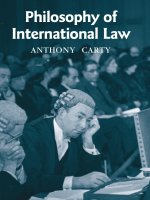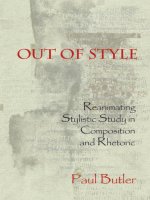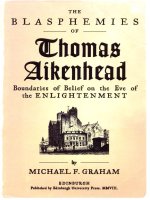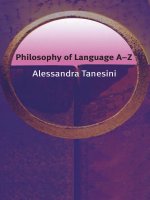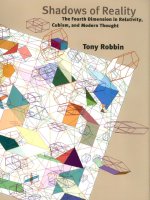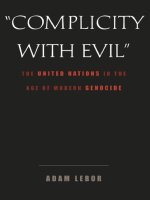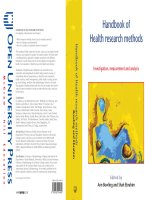utah state university press out of style reanimating stylistic study in composition and rhetoric jan 2008
Bạn đang xem bản rút gọn của tài liệu. Xem và tải ngay bản đầy đủ của tài liệu tại đây (670.31 KB, 197 trang )
C
M
Y
CM
MY
CY
CMY
K
679-0_OutOfStyle.ai 5/19/08 2:38:16 PM679-0_OutOfStyle.ai 5/19/08 2:38:16 PM
OUT OF STYLE
OUT OF STYLE
Reanimating Stylistic Study in
Composition and Rhetoric
PAUL BUTLER
UTAH STATE UNIVERSITY PRESS
Logan, Utah
2008
Utah State University Press
Logan, Utah 84322–7800
© 2008 Utah State University Press
All rights reserved.
ISBN: 978-0-87421-679-0 (paper)
ISBN: 978-0-87421-680-6 (e-book)
“Style in the Diaspora of Composition Studies” copyright 2007 from Rhetoric Review by
Paul Butler. Reproduced by permission of Taylor & Francis Group, LLC., http:// www.
informaworld.com.
Manufactured in the United States of America.
Cover design by Barbara Yale-Read.
Library of Congress Cataloging-in-Publication Data Library of Congress Cataloging-in-
Publication Data
Butler, Paul,
Out of style : reanimating stylistic study in composition and rhetoric / Paul Butler.
p. cm.
Includes bibliographical references and index.
ISBN 978-0-87421-679-0 (pbk. : alk. paper)
1. Language and languages Style. 2. Rhetoric. I. Title.
P301.B79 2008
808’.042 dc22
2007041720
To
Joan L. Baxter (Mrs. B.)
In memory of
Shirley B. Butler
CONTENTS
Acknowledgments ix
1 Introduction: Reanimating Style in Composition
and Rhetoric 1
2 Historical Developments: Relevant Stylistic
History and Theory 25
3 Out of Style: Reclaiming an “Inventional”
Style in Composition 56
4 Style in the Diaspora of Composition Studies 86
5 Style and the Public Intellectual:
Rethinking Composition in the Public Sphere 114
6 Back in Style: Style and the Future of
Composition Studies 142
Notes 160
References 163
Index 176
ACKNOWLEDGMENTS
On a recent summer morning, unable to write in my office because
a fire had disabled a transformer on campus and cut power to
most of the university, I piled approximately twenty books and
my laptop computer into the backseat of my car and headed to
the Truckee Book and Bean, near Lake Tahoe, California. As
I pulled onto I-80, the main east-west route in the area, a sign
said the town of Truckee was just nineteen miles from my home
in northwest Reno, with all but a few of those miles across the
California border. Along the way, I passed through some of the
West’s most scenic terrain, with Truckee the first leg in a route
that ascends through the Tahoe National Forest and Donner
Pass before eventually descending into Sacramento and San
Francisco. The Book and Bean, which I had discovered earlier
in the summer after a colleague suggested it, is one of a handful
of coffeehouses or similar venues that have seen me through the
writing and revising process of this book. For those like me who
do our best work in public spaces, it is gratifying to know that the
European café tradition is alive and well in the American coffee-
house, whatever shape or vision that takes in different locations.
For me, those spaces include, roughly in chronological order,
Borders in Syracuse; Space Untitled (now Pomegranate) and the
Reading Room of the New York Public Library in Manhattan;
Baker Boys and Basic in Jersey City; Barnes and Noble, Bibo,
Borders, and Walden’s Coffeehouse in Reno; and the Book and
Bean. I appreciate the cheerful reception I received in all these
places and the long, uninterrupted hours I spent at their small
and large open tables with laptop in hand.
Along with these scenes of writing, I would also like to
acknowledge the institutional spaces that informed the writing
of this book. While grounded in theory rather than pedagogy,
x OUT OF STYLE
Out of Style’s origins clearly benefited from the teaching of a
number of fine professors in composition and rhetoric. First,
I thank those with whom I was privileged to study at Syracuse
University: Collin Brooke, Fred Gale, Xin Liu Gale, Margaret
Himley, Becky Howard, Louise Wetherbee Phelps, Kendall
Phillips, Eileen Schell, Catherine Smith, Gay Washburn, and
Jim Zebroski; at the University of Arizona: Theresa Enos and
Roxanne Mountford; and at the University of Louisiana,
Lafayette: Ann Dobie and Jim McDonald. Without the help of
several extraordinary mentors at Syracuse, this book could not
have come to fruition, and in that regard I thank Collin Brooke,
Dana Harrington, and Jim Zebroski for patient, productive, and
wise counsel that always exceeded my expectations. Jim contin-
ued to offer unfailing encouragement through a process that he
often, and appropriately, described as a “marathon.” I am par-
ticularly indebted to Louise Wetherbee Phelps, a scholar whose
dedication to and passion for the study of style opened up a
treasure trove of understanding through the incredible knowl-
edge and wisdom she generously shared with me. As scholars
and teachers of composition and rhetoric, we too often wonder
about the impact we have on students’ lives, and I want to affirm
here the power of teaching to make a difference; teachers have
made an important difference in my life.
My trajectory in completing this book has certainly been
aided by a number of fine colleagues in a profession I feel
thankful every day to have found. To that end I thank my
talented and supportive former colleagues at Montclair State
University, especially First-Year Writing Director Emily Isaacs,
Laura Nicosia, and Jessica Restaino. At the University of Nevada,
Reno, I am fortunate to work with a superb group of colleagues
in rhetoric and composition and more generally in writing stud-
ies: Kathy Boardman, Shane Borrowman, Chris Coake, Jane
Detweiler, Christine Norris, Gailmarie Pahmeier, Susan Palwick,
Mark Waldo, and Mary Webb. I am grateful to the many other
English Department colleagues who have offered support
during the year, especially Michael Branch, Joe Calabrese,
Acknowledgments xi
Cathryn Donohue, Marilee Dupree, David Fenimore, Valerie
Fridland, Justin Gifford, Cheryll Glotfelty, Don Hardy, Ann
Keniston, James Mardock, Eric Rasmussen, and Ann Ronald.
I am indebted to three individuals who do much to help the
entire department and who offered great assistance during this
undertaking: Cami Allen, Alec Ausbrooks, and Michelle Beaty.
I thank Dean Heather Hardy for her generous support and the
Scholarly and Creative Activities Grants Program of the College
of Liberal Arts. In addition, I am grateful to colleague Jen Hill,
who encouraged me in my SCAGP application and, in particu-
lar, to English Department Chair Stacy Burton, whose support
for faculty and dedicated stewardship of the department make
her an unusually visionary leader. I am also extremely grateful
to Amy March and Sarah Perrault, doctoral students in rheto-
ric and composition at the University of Nevada, Reno, who
read my work with extraordinary care and insight and offered
highly intelligent editorial comments that helped me improve
my manuscript.
I would also like to thank a number of individuals in the field
whose support has made a difference in my ability to complete
this book. For their feedback on my work, I owe a debt of grati-
tude to Janice Lauer and Duane Roen, who read a version of
chapter four in preparation for its publication in Rhetoric Review.
I thank Rhetoric Review editor Theresa Enos for supporting my
work and the Taylor and Francis Group LLC for permission to
reproduce that article as part of chapter four. I am indebted to
the two anonymous readers for Utah State University Press who
offered incredibly helpful and prescient suggestions on revising
my manuscript and in the process enabled me to write a much
better book. I also thank Richard Leo Enos of Texas Christian
University, who gave knowledgeable and generous advice on an
early version of the historical account I provide in chapter two.
His suggestions opened up many new scholarly sources and ave-
nues for me to pursue. At Utah State University Press, I thank
Michael Spooner for his patient, helpful, and enthusiastic sup-
port of this book. He has offered the kind of encouragement
xii OUT OF STYLE
that anyone undertaking a project of this scope would welcome
and appreciate.
The book has benefited from friends in the field whose good
will has bolstered me during the long hours. In particular, I
thank Susan Adams, Lindal Buchanan, Tracy Hamler Carrick,
Risa Gorelick, Tobi Jacobi, Seth Kahn, Deanya Lattimore, Brad
Lucas, Nancy Mack, Joddy Murray, Mary Queen, Amy Robillard,
Brooke Rollins, Bonnie Selting, and Joseph J. Williams. I also
thank my students, graduate and undergraduate, who have
helped make my work fascinating and enjoyable. Outside
composition, I thank Michael Clarke, Aaron Dalenburg, Carl
Landorno, Bev Lassiter, Lee Medina, Scott Sutherland, Pete and
Wendy Tomco, and Diana Wilson Wing.
To the circle of friends who have offered so much during this
project I add family members who have provided tremendous
help and encouragement through the years: I am grateful to
Robert Butler, who is always interested in talking about the life
of scholars and teachers, and Tod and Katie Butler, who give me
a much-needed refuge at their Anchorage “homestead” as well
constant support for my efforts. I also thank Matt and Aislinn
Butler Hetterman; Chris, Pacey, and Jaida Butler Harris; Josh,
Liz, and Koda Butler; Ann and John Osborn; Ken Fleshman and
Vicki Maddox; Carolyn, Jim, and Amei Gove; Barb Fleshman
and Bill and Nathan White; and Sally Butler. The book is dedi-
cated to the memory of Shirley Butler, who always believed in
my ability to achieve whatever goals I set for myself.
Finally, I dedicate the book to Joan L. Baxter, affectionately
known as Mrs. B., a committed and gifted teacher who always
said she believed that teaching and writing were my natural
inclinations and showed me how they can make a difference
in others’ lives. In a culture that doesn’t seem to admire teach-
ing or the life of the mind very much, we are fortunate to have
exemplary individuals like Joan Baxter who remind us daily of
the real values that sustain us.
Reno, Nevada
January 2008
OUT OF STYLE
1
INTRODUCTION
Reanimating Style in Composition and Rhetoric
OVERVIEW: STYLE AND LANGUAGE
As a student in the French School at Middlebury College, I
wrote a stylistic analysis of nineteenth-century French poet
José-María de Heredia’s sonnet (1978, 117), “Les Conquérants”
(“The Conquistadores”), completely unaware at the time that
the study of style is part of a rhetorical tradition that began more
than 2,500 years ago. Examining the poem from several per-
spectives—phonological (sound and rhythm), syntactic, lexical,
semantic, and rhetorical—I looked at such features as the poet’s
use of explosive consonants and stops (including enjambment)
as devices to convey the harshness of the conqueror’s “brutal”
departure; the later contrast with certain liquid and nasal con-
sonants and the repetition of assonant vowel sounds to signal a
shift in mood after the discovery of an exotic new land; the poet’s
reversal of syntax, first to speed up and then to slow down the
rhythm of the poem; the sonnet’s changing lexical field, with an
opposition between nouns with masculine and feminine genders
that parallels the poem’s increasingly ameliorative movement
from conquest to hopeful acceptance; and the contrastive use of
rhyme to reflect the imprisonment of the conquerors who, liter-
ally and figuratively, break away from their native country to an
alluring new world. While analyzing the poem’s stylistic features
and patterns, I was able to demonstrate how Heredia deployed
various elements of form to help achieve his overall effect. I
now know that my analysis of the sonnet falls under the rubric
of stylistics—or the study of style—whose history in literature
complements its ancient counterpart in the history of rhetoric
and its equally dynamic history in the field of composition.
2 OUT OF STYLE
In composition studies, the salient features of style—
which Richard Ohmann defines as “a way of writing” (1967,
135)—are often different from those in literature, and the
texts examined are generally non-literary prose rather than
poetry or fiction. Like literary stylistics, however, composi-
tion’s approach to style has clearly been influenced by lin-
guistics, the study and description of language phenomena
in units up to and including the sentence, and by rhetoric,
the study and use of language in context to inform, persuade,
and produce knowledge. Some of the linguistic and rhetorical
features I examined in Heredia’s sonnet include sound and
rhythm, vocabulary, diction, register, syntax, and semantics,
as well as figures of speech like tropes (e.g., metaphor) and
schemes (e.g., parallelism). Although various other elements
(e.g., phonetics and graphics) are also relevant to style, I
argue that stylistic features are part of descriptive and inter-
pretive frameworks—from classical rhetoric, discourse analy-
sis, linguistics, and literary theory, history, and criticism, for
example—that link their objects of study to the ways one goes
about studying them.
Depending on what aspect of a stylistic relationship is being
emphasized, one of several definitions of style might be used,
each one representing a different theoretical approach to the
topic. Indeed, it is fair to say that any definition of style involves
one of several long-standing debates that have informed the
study of the canon throughout history. Thus, for example, when
Ohmann defines style as “a way of writing,” he is taking the posi-
tion that style is a choice (of words, syntax, etc.) a writer makes
among alternative forms. His broader argument is that style (or
form) is separate from content (or meaning), and for him this
“dualistic” theory underpins a central question: “If style does
not have to do with ways of saying something . . . is there anything
at all which is worth naming ‘style?’” (Ohmann 1959, 2). While
this perennial form-content issue is discussed in detail below,
its brief mention here is intended to indicate the complex-
ity surrounding the question of what constitutes “style.” The
Introduction 3
counterpart to Ohmann’s dualistic view of style is an “organic”
position, often attributed to Aristotle, asserting that form
and content are inseparable. Another definition of style—the
unique expression of an individual’s personality (“style is the
man”)—raises the question of whether style is an unconscious
process or a matter of conscious control among writers (Milic
1971, 77). Defining style as a unique or idiosyncratic—some-
times, an extraordinary—use of language implies an opposing
norm or a standard, ordinary use that raises theoretical debates
about whether to identify style with social groups or with char-
acteristics of an individual’s personality. Still another question
focuses on whether style is measured subjectively, by so-called
impressionistic techniques, or objectively, through the applica-
tion of quantitative measurements, especially computers.
Because these multiple—and often competing—definitions
of style are sometimes confusing, I define style as the deploy-
ment of rhetorical resources, in written discourse, to create and
express meaning. According to this definition, style involves
the use of written language features as habitual patterns, rhe-
torical options, and conscious choices at the sentence and
word level (see Connors 1997, 257), even though the effects
of these features extend to broader areas of discourse and
beyond. The term “rhetorical,” while informed by a rich his-
tory in oral discourse, refers specifically to written language
as it is used to inform, persuade, and generate knowledge for
different purposes, occasions, and audiences. This definition
not only accommodates several perspectives on language, but
also accounts for ways in which language theories can aid the
deployment of style in various contexts. While I am adopting
a rhetorical definition of style that includes qualities like tone,
emphasis, and irony, certain linguistic concepts are also rel-
evant. For example, some of the phenomena I used to analyze
Heredia’s poem (e.g., diction and syntax) are linguistic as well
as rhetorical. However, as Sharon Crowley argues in “Linguistics
and Composition” (1989), the use of linguistics in the study
of style is problematic in that “American linguistics habitually
4 OUT OF STYLE
privileged the spoken over the written word” (492) and thereby
avoided the more complex structures used, for instance, by
professional writers. Furthermore, Crowley acknowledges the
general deficiency of linguistics as an organizing system: “To
date, no linguistically based stylistic taxonomy has appeared
that begins to rival the scope of that developed . . . by classical
rhetoricians” (491). In addition, Susan Peck MacDonald asserts
that “one of the unfortunate disciplinary accidents of the late
twentieth-century period is that trends in linguistics have been
out of synch with English” (MacDonald 2007, 609).
For my purposes, then, I am focusing on the features of
style that can be described locally through rhetoric, even
though the effects of those elements are not necessarily local,
but extend to more global features of discourse or to readers’
responses (see Williams 2005, 351). One example of a lan-
guage phenomenon that functions precisely in this way is the
concept of “cohesion,” which M. A. K. Halliday and Ruqaiya
Hasan define as the “relations of meaning that exist within the
text, and that define it as a text” (1976, 4). Even though cohe-
sion can be described locally—for example, the cohesive device
“exophora,” or the use of pronouns that have an antecedent
in a previous sentence, is a device occurring within individual
sentences—it is manifested only globally, or throughout a
text, where it refers to the relational effects of the pronoun
use, or what the authors call “non-structural text-forming
relations” (7). As Stephen Witte and Lester Faigley explain
in “Coherence, Cohesion, and Writing Quality,” “For Halliday
and Hasan, cohesion depends upon lexical and grammatical
relationships that allow sentence sequences to be understood
as connected discourse rather than as autonomous sentences”
(Witte and Faigley 1997, 214). Louise Wetherbee Phelps adds
that cohesion, as used in composition, “has been reserved for
stylistic features of texts (language) in global contrast to their
semantic and pragmatic aspects of structures (meaning)”
(1988, 174). In Cohesion in English (1976), a book that had a
profound impact on composition studies when it appeared,
Introduction 5
Halliday and Hasan explain further how cohesion passes from
language into meaning and discourse structure:
The concept of cohesion is set up to account for relations in dis-
course . . . without the implication that there is some structural
unit that is above the sentence. Cohesion refers to the range of pos-
sibilities that exist for linking something with what has gone before.
Since this linking is achieved through relations in meaning . . . what
is in question is the set of meaning relations which function in this
way: the semantic resources which are drawn on for the purpose of
creating text. (10)
In acknowledging, as Halliday and Hasan do, that stylistic
effects extend to patterns of meaning beyond sentences, I
contend nonetheless that efforts to attribute linguistic features
to discourse, sometimes called “text linguistics,” have been
unsuccessful. For example, scholars like Francis Christensen
attempted to devise a rhetoric (or grammar) of the paragraph
analogous to a sentence-based model. In “A Generative Rhetoric
of the Paragraph,” Christensen argued that “the principles used
[in his article ‘A Generative Rhetoric of the Sentence’] were
no less applicable to the paragraph” (1978, 76). Yet, composi-
tion scholars like Paul Rodgers (1966) rejected Christensen’s
“sentence-expanding” notion of “the average paragraph as a
‘macro-sentence or meta-sentence,’” because he felt that the
principles were not transferable. Similarly, Rodgers critiqued
what he called Alton Becker’s attempt “to analyze paragraphs
‘by extending grammatical theories now used in analyzing
and describing sentence structure’” (73). In addition, W.
Ross Winterowd ultimately “emphatically repudiated” his own
previous contention that “the sentence is the most productive
analogical model for exploration of ‘grammar’ beyond the sen-
tence” (1986, 245). Similarly, Frank D’Angelo’s (1976) effort to
extend syntactic structures to larger stretches of discourse—one
he attempted to develop into a “full-fledged theory and peda-
gogy of composition” (Crowley 1989, 496)—was never taken up
broadly by scholars in the discipline.
6 OUT OF STYLE
For similar reasons, I argue that style is not the equivalent
of literary studies’ “thematics” or its theory of “textual com-
parison” (Todorov 1971, 36), which attempts to apply stylistic
features to whole bodies of work. Part of the reason for moving
away from text linguistics came about with the understanding
that language does not itself create or express meaning and
that a great deal of what makes meaning is contextual and
dependent on such “extralinguistic” factors as the reader and
his or her responses to the text. In his analysis of a recently
translated essay on style and pedagogy by Mikhail M. Bakhtin
(see Bazerman 2005, 333–38), Joseph M. Williams explains the
importance of these types of responses:
Most of the words we use to describe style displace our responses
to a text into that text or its writer. When we say a sentence is clear,
we mean that we understand it easily. When we say a speaker is
coherent, we mean that we have no trouble following him or her.
Such qualities are neither in the speaker (“You are clear”) nor in
the speaker’s language (“Your sentence is clear”). They are in our
responses to particular syntactic, lexical, and other features on the
page (or in the air), uttered or written and heard or read in a par-
ticular context. (Williams 2005, 351)
1
Given the importance of our responses to numerous textual
and non-textual features, it is clear that stretches of discourse
beyond the sentence—what Rodgers, to cite one example,
called a “stadium of discourse” (1966, 73)—reveal other impor-
tant insights into language and meaning related to stylistic
analysis. For example, in a slightly different approach, Winston
Weathers attempted to define style more broadly in his article,
“Grammars of Style” (1990). A “grammar of style,” he suggested,
is the “set of conventions governing the construction of a whole
composition; the criteria by which a writer selects the stylistic
materials, method of organization and development, composi-
tional pattern and structure he is to use in preparing any par-
ticular composition.” Weathers’s argument that style includes
the “conventions . . . of a whole composition” (201) influenced
Introduction 7
some scholars who reconceived of style as arrangement, as
in the Weathers-inspired collection Elements of Alternate Style
(Bishop 1997). This approach, in fact, is suggestive of Young,
Becker, and Pike’s contention that style is part of the “universe
of discourse,” an idea they developed in their innovative text
Rhetoric: Discovery and Change (1970).
THE BREADTH OF STYLISTIC INTEREST IN
STYLE’S “GOLDEN AGE”
I argue that composition has developed a selective and biased
memory of what I call the “Golden Age” of style study, roughly
a three-decade period (from the 1960s to the mid-1980s) that
overlaps with what is commonly known today as the “process
movement.” As evidence of this claim, I cite recent works that
express renewed interest in the study of style during that time
period, yet conceive of it narrowly—primarily as syntax. Two
examples are Robert Connors’s article “The Erasure of the
Sentence” (2000) in which he discusses so-called “sentence
rhetorics” (121), largely based in syntax, that he says disap-
peared around 1985: generative rhetoric, sentence combining,
and imitation; and Crowley’s article surveying linguistics and
pedagogies of style from 1950 to 1980, where she suggests that
in both structural linguistics and the transformational linguis-
tics practice of sentence combining, the basis for the study of
style was the use of “syntactic structures in English” (1989, 487).
During the process era, Winterowd designated as “pedagogical
stylistics” (1975, 253) the practical applications of largely syntac-
tic methods that some considered the most useful for effecting
improvement in student writing.
While it is true that syntax was a prominent focus of style study
during the Golden Age, it certainly was not the exclusive focus,
and the tendency to read other stylistic features out of accounts
of that era reinforces composition’s increasingly selective mem-
ory of it. What’s more, the limited recollection adds fuel to
today’s nearly universal characterization of style as a “remnant”
of current-traditional rhetoric, as the rhetorical antithesis of
8 OUT OF STYLE
invention (see Chap. 3), and as focused on what some scholars,
borrowing from Connors, refer to as “sentence-based pedago-
gies” (96). If, as I argue, the study of style during the Golden
Age was not limited to a narrow focus on syntax or its use in
developing syntactic maturity in student writing, then what did
style studies, broadly construed, consist of during a period of
composition history that overlapped with the discipline’s process
movement? Furthermore, what would a complete inventory of
these stylistic practices comprise today? To answer that question
fully, it is necessary to conduct historical research of the process
era and Golden Age that goes beyond the scope of this book.
Nonetheless, by pointing to some of the work that comprised
the study of style at the time, I hope to give a sense of the future
possibilities that exist for stylistic research, theory, and practice.
In addition to sentence combining and generative rhetoric,
many scholars of the Golden Age (and process era) examined
theories of cohesion—or the linking of one part of a text to
another by means of such devices as reference, substitution,
ellipsis, lexical cohesion, and conjunction (Halliday and Hasan
1976)—and coherence, the ability of interpreters to discover
and attribute holistic meanings to texts, cued by cohesive sys-
tems (Phelps 1988, 174). One example of work on cohesion dur-
ing the Golden Age was Young and Becker’s “lexical equivalence
chains,” high-level sequences of discourse, which they discussed
in an essay on the contributions of tagmemic rhetoric to com-
position, especially stylistic study (1967, 99–100). A similar area
of study involved what has been variously described in different
traditions as “topic and comment,” “theme and rheme,” or the
“known and new” contract, which posits that a sentence conveys
its message most cohesively if the “topic,” or theme of the sen-
tence, contains the “known” or least important information and
precedes the “comment,” which expresses the “new” or most
important information related to the theme (Vande Kopple
1990, 215). The various terms for this theory can be confusing,
as Phelps points out, because “it is not clear whether we are deal-
ing with different labels for a few functions or many different
Introduction 9
functions” (1984, 52). This umbrella of terms was often grouped
under the rubric of what William Vande Kopple has called
“Functional Sentence Perspective (FSP)” (1990) and was used
in the work of such composition scholars as Joseph Williams
(1994) and E. D. Hirsch (1977). Phelps (1984, 52) suggests, how-
ever, that some of the originators of the terms included Halliday
(1967), Wallace Chafe (1973), George Dillon (1981), and such
Prague School linguists as Frantisek Daneš (1974).
In addition to an interest in cohesion and coherence, some
scholars focused on the difference between “nominal” and “ver-
bal” styles; nominalization generally refers to producing a noun
by adding derivational affixes to a verb or adjective (e.g., pro-
ficient and proficiency). Williams and Rosemary Hake found
in a series of studies that an essay written in a nominal style
“tends to be perceived as better organized, better supported,
and better argued than the corresponding verbal paper” (1986,
178–79). The preference for nominalization among high school
and some college composition instructors, however, contra-
venes Williams’s contention that “sentences seem clearer when
actions are verbs,” though he does acknowledge the usefulness
of nominalization as a cohesive device (Williams 1994, 38, 48).
Another area of stylistic study based on readers’ perceptions of
the readability of writing hails from the field of psycholinguis-
tics. In The Philosophy of Composition (1977), Hirsch introduced
the idea of the “relative readability” of prose, which is the idea
of improving style based on Herbert Spencer’s (1881) con-
cepts of “economizing the reader’s or hearer’s attention” and
the “least possible mental effort” (11) . Building on Spencer’s
ideas, Hirsch went on to define relative readability as follows:
“Assuming that two texts convey the same meaning, the more read-
able text will take less time and effort to understand” (85; emphasis
original). Even though Hirsch later disavowed the concept of
relative readability, it represented one area of stylistic attention
influenced by psychology during that era.
In addition to the predominately syntactic areas of sentence
combining and generative rhetoric, there was also widespread
10 OUT OF STYLE
interest in rhetorical imitation. While imitation certainly involves
syntactic features (see Connors 2000), it also goes beyond
that rhetorical aspect of sentences. Frank Farmer and Phillip
Arrington (1993) have defined imitation as “the approxima-
tion, whether conscious or unconscious, of exemplary models,
whether textual, behavioral, or human, for the expressed goal
of improved student writing” (13). The practice draws on many
traditions going back to such classical rhetoricians as Gorgias,
Isocrates, Cicero, and Quintilian. In evaluating the ideas of some
of these Sophistic and Roman rhetors, Mary Minock suggests in
“Toward a Postmodern Pedagogy of Imitation” (1995) that their
concepts of imitation, in a nod to postmodernism, “echo some of
the insights of Bakhtin, Derrida, and Lacan.” Minock goes on
to argue that the work of these latter, twentieth-century theo-
rists departs “from the pedagogies of imitation of the past that
worked well (only) in their particular contexts” (493). Today,
as Farmer and Arrington explain, a direct correlation is often
imputed between imitation and a concern for improving stylis-
tic quality: “Since imitation’s fortunes have traditionally been
wedded to style,” they observe, “a good case can be made that a
diminished respect for style as an intellectual concern is likewise
a narrowing of the possible uses of imitation in the classroom”
(15). Thus, Farmer and Arrington argue convincingly that imi-
tation has suffered the same fate as style, is inextricably linked
to style, and, like stylistic study, has moved to the periphery in
composition studies.
In contrast with the apparent recent demise of imitation
(Farmer and Arrington 1993; Connors 2000), during the Golden
Age a number of individuals studied the impact of imitation
on improving student writing, including Edward P. J. Corbett,
whose article “The Theory and Practice of Imitation in Classical
Rhetoric” (1989b) is certainly linked to the multiple editions of
his textbook Classical Rhetoric for the Modern Student (1971). In a
book devoted to imitative practice, Copy and Compose, Weathers
and Otis Winchester (1969) asked students to reproduce model
sentences and paragraphs written by professional writers. In her

